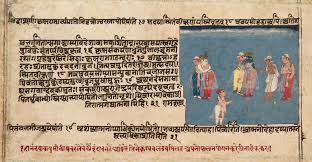The Puranic Repository
Classification of Puranas
The Puranic repository is divided into three categories:
-
Maha-Puranas (Great Puranas):
- Possess five specific lakshanas (characteristics).
- Total verses in each can exceed 4 lakhs.
- There are 18 Maha-Puranas.
-
Upa-Puranas (Subsidiary Puranas):
- Smaller in scope than Maha-Puranas but share some characteristics.
- Also numbered at 18.
-
Sthala-Puranas (Local Puranas):
- Connect specific stories to temples or places.
- Example: Brihadeshwara Temple (Tamil Nadu), Rameshwaram Temple, Varanasi.
- Numerous and without a fixed count.
Panchalakshanas (Five Characteristics) of Maha-Puranas
A Purana must have these five characteristics to be classified as a Maha-Purana:
-
Sarga: Creation of the universe.
- Discussions on the origin of the universe.
- Description of initial nothingness and gradual development.
- Account of the emergence of deities and subsequent creations.
-
Prati Sarga: Destruction and recreation of the universe.
- Cycles of destruction (Pralaya) and re-creation.
- Narratives explaining the process of destruction and subsequent renewal.
-
Vamsha: Dynasties of kings.
- Genealogies and histories of royal lineages.
-
Manvantara: Times of different Manus (periods of cosmic time).
- Explanations of different time cycles.
-
Vamshanucharita: Stories of different dynasties, including stories of rishis and sages.
- Accounts of lineages and the lives of sages.
- Focuses on the great personalities within the dynasties.
Contents of Maha-Puranas (Examples)
- Total verses: 4 lakhs.
- 18 Puranas, each with its own set of verses: Agni, Bhagavata, Vamana, Kurma, Garuda, etc.
- Puranas are encyclopedic, covering diverse subjects beyond just religious worship.
Agni Purana
- Rules for worship of deities.
- Installations of images in temples (architecture).
- Astrology
- Architecture
- Sculptures
- Medicine
- Toxicology
- Principles of dramaturgy
- Human psychology
- Figures of speech
Bhagavata Purana
- Deals with the life of Krishna.
- Cosmic form of God.
- Creation of the world.
- Uddhava Gita.
- List of kings who ruled after Krishna.
- Description of Kaliyuga.
- 12th Skanda of Bhagavata describes the present age (Kaliyuga).
Other Notable Content Found in Puranas
-
Speaking about Past, Present and future: All the three times.
-
Bhavishya Purana: Deals with future, the whole purana speaks about the future.
- Explains Sixteen Samskaras from birth to death.
-
Rules Concerning Vedas: Studies of Vedas, who can study it, how it should be studied, what are the rules.
-
Varnashrama Dharmas: From student life (Brahmacharya), married life, then retired life, then Sannyasa life (four Ashramas).
- Varna Dharma: Brahman, Kshatriya, Vaishya, Shudra Dharmas.
-
Varnashrama Dharmas: From student life (Brahmacharya), married life, then retired life, then Sannyasa life (four Ashramas).
-
Various types of Vratas explained.
-
Chapters from Mahabharata in Brahma Purana acts as an additional information on the Mahabharata.



No Comments